#Kentucky insects
Text
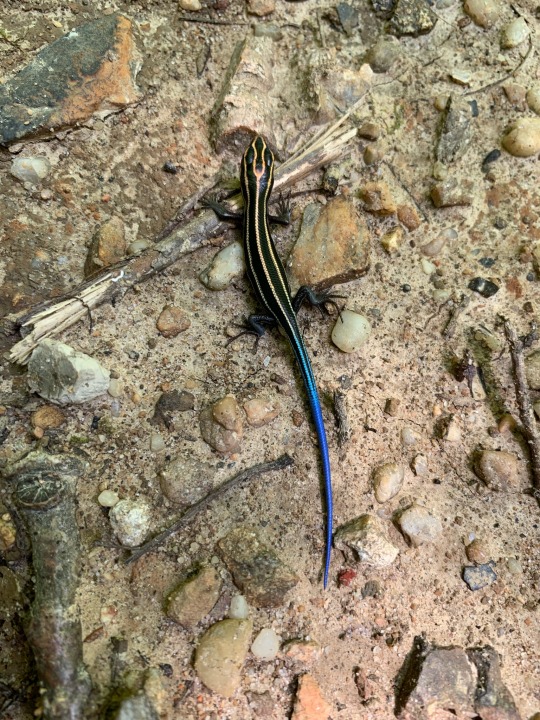



Some of the best creatures I saw last summer :)
#trying to fight seasonal depression#creatures#insects#bugs#lizard#butterfly#nature#wildlife#kentucky
648 notes
·
View notes
Photo
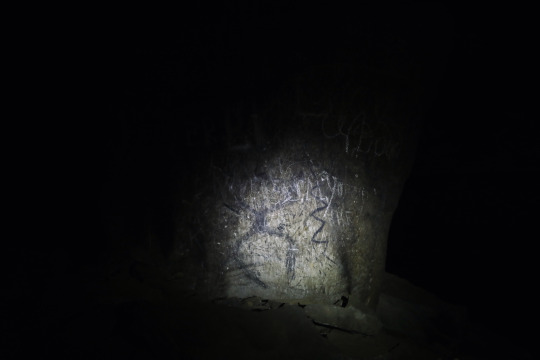
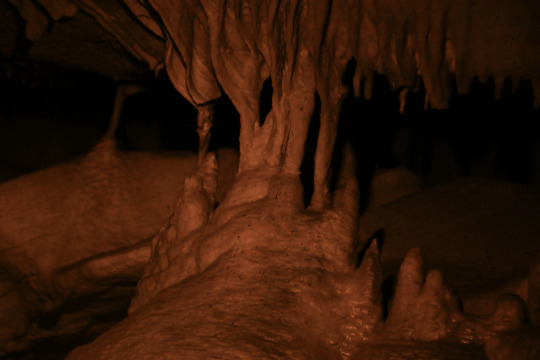


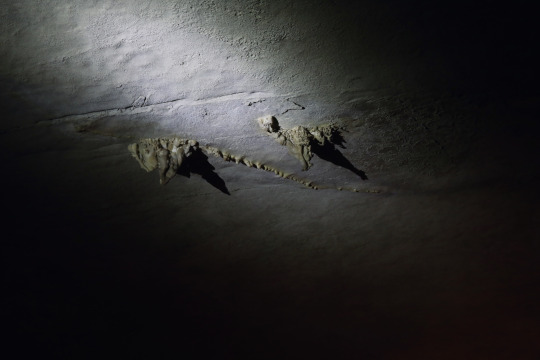



Deep underground in Mammoth Cave, Kentucky
Taken July 2022
#caves#mammoth cave#kentucky#petroglyphs#cave crickets#insects#stalactites#lanterns#my photos#my places#taotfv
205 notes
·
View notes
Text








Crawling around
#landscape#landscape photography#flowers#plants#insects#fall#autumn#nature#nature photography#naturecore#kentucky
11 notes
·
View notes
Text
❤️ Such a beautiful Wolf spider with her egg sac. Doing a little rescue, relocating.
Kingdom Animalia (Animals)
Phylum Arthropoda (Arthropods) Subphylum Chelicerata (Chelicerates) Class Arachnida (Arachnids)
Order Araneae (Spiders)
Infraorder Araneomorphae (True Spiders)
No Taxon (Entelegynae)
Family Lycosidae (Wolf Spiders)
Genus Rabidosa

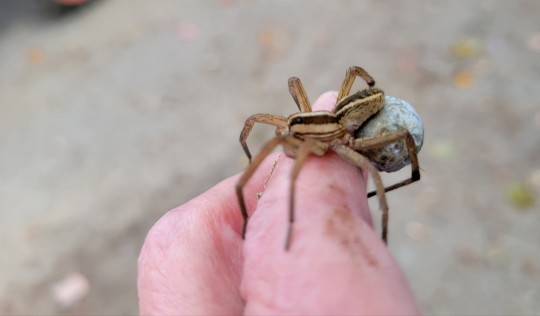

#spider photography#spiders#entomology#photographers on tumblr#nature photography#insect photography#science#southeast kentucky#I love Spiders#macro photography#insects
24 notes
·
View notes
Text
Back on my hyperfixation shenanigans so I have not slept and here's a list of what I consider to be the prettiest beetles, butterflies and moths, damselflies, and grasshoppers and crickets that inhabit Colorado and Kentucky according to insectidentification.org :
COLORADO
Emerald ash borer (Agrilus planipennis)
Fifteen-spotted lady beetle (Anatis labiculata)
Golden tortoise beetle (Charidotella sexpunctata)
Knapweed root weevil (Cyphocleonus achates)
Longhorn beetle (Semanotus amethystinus)
Dogbane Leaf Beetle (Chrysochus auratus)
European Ground Beetle (Carabus nemoralis)
Golden Net-wing Beetle (Dictyoptera aurora)?
Margined Blister Beetle (Epicauta funebris)
May Beetle - P. lanceolata (Phyllophaga lanceolata)
Mottled Tortoise Beetle (Deloyala guttata)
Pleasing Fungus Beetle (Gibbifer californicus)
Poplar Borer Beetle (Saperda calcarata)
Shining Leaf Chafer - Anomala spp. (Anomala spp.)
Signate Lady Beetle (Hyperaspis signata)
American Lappet Moth (Phyllodesma americana)
Cinnabar Moth (Tyria jacobaeae)
Common Checkered-Skipper (Pyrgus communis)
Glover's Silkmoth (Hyalophora columbia gloveri)
Great Ash Sphinx Moth (Sphinx chersis)
Autumn Meadowhawk (Sympetrum vicinum)
Black Saddlebags Skimmer (Tramea lacerata)
Bird Grasshopper (Schistocerca spp.)
Obscure Bird Grasshopper (Schistocerca obscura)
Sooty Longwing Katydid (Capnobotes fulginosus)
KENTUCKY
Andrew's Snail-eating Beetle (Scaphinotus andrewsii)
Black Firefly (Lucidota atra)
Calligrapha Beetle (Calligrapha spp)
Eastern Hercules Beetle (Dynastes tityus)
Emerald Euphoria Beetle (Euphoria fulgida)
Glowworm (Phengodes spp.)
Goldsmith Beetle (Cotalpa lanigera)
Metallic Wood-boring Beetle: Chalcophora (Chalcophora fortis)
Notched-mouth Ground Beetle (Dicaelus purpuratus)
One-spotted Tiger Beetle (Apterodela unipuncata)
Rainbow Darkling Beetle (Tarpela micans)
Rainbow Scarab Beetle (Phanaeus vindex)
Six-spotted Tiger Beetle (Cicindela sexguttata)
Southern Sculptured Pine Borer Beetle (Chalcophora georgiana)
Stag Beetle (Lucanus capreolus)
Twice-stabbed Lady Beetle (Chilocorus stigma)
Vietinghoff's Ground Beetle (Carabus vietinghoffii)
Abbott's Sphinx Moth (Sphecodina abbottii)
American Ermine Moth (Yponomeuta multipunctella)
Arched Hooktip (Drepana arcuata)
American Bird's-Wing Moth (Dypterygia rozmani)
Arcigera Flower Moth (Schinia arcigera)
Attentive Crocus Moth (Xanthotype attenuaria)
Basswood Leafroller (Pantographa limata)
Beautiful Wood-Nymph (Eudryas grata)
Black-waved Flannel Moth (Megalopyge crispata)
Blackberry Looper (Chlorochlamys chloroleucaria
Blinded Sphinx Moth (Paonias excaecata)
Bluish Spring Moth (Lomographa semiclarata
Buck Moth (Hemileuca maia)
Carmine Snout Moth (Peoria approximella)
Carrot Seed Moth (Sitochroa palealis)
Cecropia Silk Moth (Hyalophora cecropia)
Changeable Grass-Veneer (Fissicrambus mutabilis)
Colorful Zale (Zale minerea)
Common Lytrosis Moth (Lytrosis unitaria)
Confused Eusarca (Eusarca confusaria)
Cross-lined Wave (Timandra amaturaria)
Curve-toothed Geometer (Eutrapela clemataria)
Dark-banded Geometer (Ecliptopera atricolorata)
Deep Yellow Euchlaena (Euchlaena amoenaria)
Diaphania costata (Diaphania costata
Dimorphic Macalla (Epipaschia superatalis)
Dot-lined White (Artace cribrarius)
Dotted Gray (Glena cribrataria)
Drab Prominent (Misogada unicolor)
Eight-spotted Forester Moth (Alypia octomaculata)
Elder Shoot Borer (Achatodes zeae)
Explicit Arches (Lacinipolia explicata)
Eyed Paectes Moth (Paectes oculatrix)
Falcate Orangetip (Anthocharis midea) (female)
Fall Webworm (Hyphantria cunea)
False Crocus Geometer (Xanthotype urticaria
Fervid Plagodis (Plagodis fervidaria)
Fig Sphinx (Pachylia ficus)
Friendly Probole Moth (Probole amicaria)
Giant Leopard Moth (Hypercompe scribonia)
Goldcap Moss-eater Moth (Epimartyria auricrinella)
Gray-edged Hypena (Hypena madefactalis)
Green Arches (Anaplectoides prasina)
Hag Moth (Phobetron pithecium
Hibiscus Leaf Caterpillar Moth (Rusicada privata)
Imperial Moth (Eacles imperialis)
Lesser Maple Spanworm Moth (Speranza pustularia
Luna Moth (Actias luna)
Melissa Blue Butterfly (Plebejus melissa spp.)
Modest Sphinx Moth (Pachysphinx modesta)
Morbid Owlet Moth (Chytolita morbidalis)
Orange-patched Smoky Moth (Pyromorpha dimidiata)
Pale Beauty (Campaea perlata)
Pale Lichen Moth (Crambidia pallida)
Pale Metarranthis (Metarranthis indeclinata)
Pandorus Sphinx Moth (Eumorpha pandorus)
Parthenice Tiger Moth (Apantesis parthenice)
Pearly Wood-Nymph Moth (Eudryas unio)
Pero Moth (Pero spp.)
Pink-patched Looper (Eosphoropteryx thyatyroides)
Pipevine Swallowtail (Battus philenor)
Pistachio Emerald Moth (Hethemia pistasciaria)
Plebeian Sphinx Moth (Paratrea plebeja) (Caterpillar)
Primrose Moth (Schinia florida)
Promiscuous Angle Moth (Macaria promiscuata)
Raspberry Pyrausta (Pyrausta signatalis)
Rustic Sphinx Moth (Manduca rustica)
Saddleback Caterpillar Moth (Acharia stimulea)
Saddled Yellowhorn (Colocasia flavicornis)
Salt-and-pepper Looper Moth (Syngrapha rectangula)
Satin Moth (Leucoma salicis)
Scarlet-winged Lichen Moth (Hypoprepia miniata)
Schlaeger's Fruitworm Moth (Antaeotricha schlaegeri)
Showy Emerald Moth (Dichorda iridaria)
Small Bird Dropping Moth (Ponometia erastrioides)
Snowy Urola (Urola nivalis)
Sorghum Webworm Moth (Nola cereella)
Southern Flannel Moth (Megalopyge opercularis)
Southern Longhorn Moth (Adela caeruleella)
Southern Pine Sphinx (Lapara coniferarum)
Southern Tussock Moth (Dasychira meridionalis)
The Badwing (Dyspteris abortivaria)
Unspotted Looper Moth (Allagrapha aerea)
Venerable Dart Moth (Agrotis venerabilis
Vine Sphinx Moth (Eumorpha vitis)
Walnut Sphinx Moth (Amorpha juglandis)
Wavy-lined Emerald Moth (Synchlora aerata)
Western Grapeleaf Skeletonizer Moth (Harrisina metallica)
White Flannel Moth (Norape ovina)
White Slant-line Moth (Tetracis cachexiata)
White-fringed Emerald Moth (Nemoria mimosaria)
Yucca Moth (Tegeticula, Greya, and Prodoxus spp.)
Carolina Locust (Dissosteira carolina)
Eastern Shieldback Katydid (Atlanticus spp.)
Slender Meadow Katydid (Conocephalus fasciatus)
True Katydid (Pterophylla camellifolia)
Ebony Jewelwing (Calopteryx maculata)
Midland Clubtail (Gomphurus fraternus)
Red Saddlebags (Tramea onusta)
Seepage Dancer (Argia bipunctulata)
5 notes
·
View notes
Text
I found pictures of old friends!


2 notes
·
View notes
Text
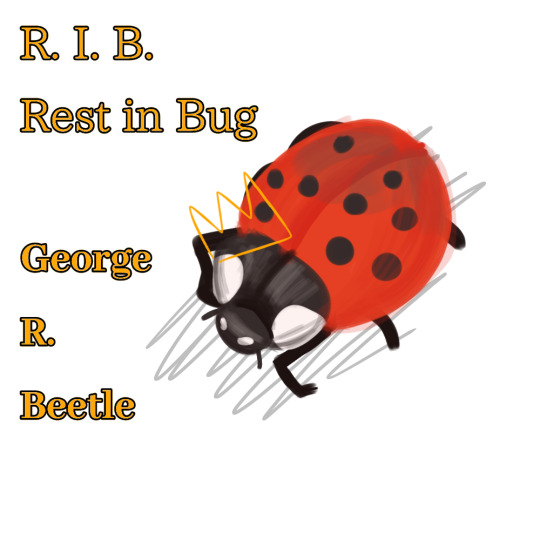
I met my best friend tonight. George the Russian Beetle. For the five minutes I knew him, he was the greatest. Rest In Bug, George R. Beetle the VI. ❤️
I'm going to start drawing the bugs I see and naming them.
1 note
·
View note
Text
I've seen more nature in the past hour than usual. Immediately upon arriving home I saw a blue tailed lizard on my porch, I tried to get a picture, but it ran behind the mop bucket first. I did get a picture of the Tipula maxima on my bedroom wall, however, I don't know where it is now, though. And then there was a clover mite crawling on my phone. If you see a Tipula maxima or clover mite you're supposed to kill it, but I didn't. Who am I to decide what gets to live and die? Does it being an insect or arachnid make it better? I don't think so.
#insects#arachnids#nature#blue tailed skink#blue tailed lizard#tipula maxima#crane fly#crane flies#lizard#reptile#reptiblr#clover mite#bugs#bugblr#kentucky nature#kentucky#eastern kentucky#wilderness#mites#entomology
1 note
·
View note
Text
Introducting- the Harlow babies
Mae Harlow
-Mae she is 6 years old the youngest of the Harlow babies
-loves coloring and drawing
-a goofy little girl
-she was born on December 6th in Louisville Kentucky (of course)
-she is most definitely a daddy’s girl which Jack loves
-mini him
-her obsession is with stuffed animals she finds comfort in them
-she is very much a shy girl but also a people’s person which could be confusing for you and Jack sometimes she only clicks with certain people
-she can be sassy sometimes and has a bit of a mouth which drives you crazy because she’s just like you
-very joyful
-loves to nap most kids cry when they have to go to sleep but her she can sleep all day if you let her
-
Jane Marie Harlow
-Jane is 9 years old born on July 9th Louisville Kentucky
-she is a bit more older than the rest of them she sometimes goes with Jack on tour
-she loves singing which at her age she’s pretty good at but Jack does not want her to be in the music industry because he knows how it is
- a sweetheart she loves giving back just like her dad
-she had a very good sense of humor just like Jack
-Jane is a moms girl she’s also gravitated towards you since she was a baby
-she loves spending time at grandma and grandpa’s house “can I go to grandma and grandpa’s house today” she loves there house so much she even stayed there for 2weeks one time
-she loves nature anything to do with insects,animals she loves it loves watching documentaries on animals
-
The Harlow twins Ryder and Ruth
-both 7 born on may 2 in Louisville Kentucky
-now these two are the trouble makers they get in trouble at lot since you and Jack agreed you wouldn’t spank your kids they spend most of there time in time out
-Ryder he loves to skateboard for his birthday he got a skateboard which he was very excited about
-Ruth on the other hand loves reading she reads a lot almost to much to the point it’s night time and she’s still reading
-one thing you could say about them is that there very caring towards there siblings
-they can’t do anything without each other they are attached to the hip they love matching it’s just there thing
-when they were born you immediately had to make a mental note about which one is which because they look so much alike you thought it would be hard to tell but once they got older it was easier to tell them apart
I’m excited to start doing dad jack fics because I love reading them there so adorable and cute I hope you guys are excited as much as I am 🥰🤍
41 notes
·
View notes
Text
Genus: Geothlypis
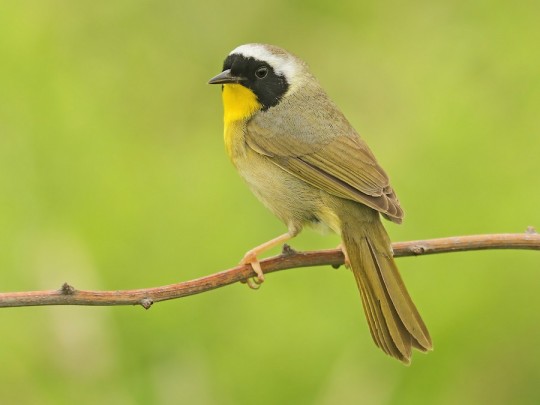
Common Yellowthroat (type species)
The common name of this genus is 'yellowthroats', which should be fairly obvious as to why. Even the females, who typically are much more muted in color, still have buttery yellow feathers under their chin. There are many variations on the pattern of 'black mask, olive body, yellow throat', but many of these species have a similar theme that can be told from looking them over. However, there are a few new additions that stand out.

The Kentucky Warbler (above), Mourning Warbler, and MacGillivray's Warbler used to be in a genus called Oporornis, which they shared with Connecticut Warbler. Newer genetic analysis showed that they belonged within the yellowthroat genus, however, and they were moved accordingly within the taxonomy.
This genus is known for their preference of scrubby habitat, with many species preferring damp marshes or reed beds as well. The etymology of Geothlypis comes from geo, meaning 'ground' or 'earth', and thlupis, which we've seen before in Myiothlypis. This is a reference to a small, unknown bird spoken of in a Greek text, but has become better known through these few warbler genuses. This could be translated as "small, ground-dwelling bird", which makes sense of the skulky, skittering habits of the yellowthroats. Ducking in and out of scrub, grabbing at whatever insects they can find, keeping in as much brush as possible- those are yellowthroats. The males often will find a good, clear perch to sing from, which can be the best time to grab a quick look or some pictures.
9 notes
·
View notes
Text
December 16th, 2023


Six-spotted Tiger Beetle (Cicindela sexguttata)
Distribution: Found in the northeastern USA and southern Canada; north to Ontario, west to Minnesota and as far south as Kentucky.
Habitat: Mainly found in deciduous forests, but also in sunny areas like dirt paths, sidewalks and roads, fields, grassy areas and on decaying logs (but rarely far from wooded areas).
Diet: Adults and larvae are both carnivorous, feeding on insects and other invertebrates, such as caterpillars, ants and spiders.
Description: Despite being called the six-spotted tiger beetle, the spots on thus tiger's elytra may vary between zero to eight spots. They also have remarkably long legs, allowing them to run at high speeds—they're so fast, in fact, that their eyes have trouble processing fast enough to keep up, meaning they can't run more than short spurts without being blinded. As expected by their speed, adults are active predators—the grub-like larvae, however, are ambush predators, burrowing into patches of sandy substrate and lunging out at their prey when it comes near. In order to avoid being dragged out of their burrow, larvae also have hooks on their abdomen, allowing them to hang onto the substrate.
These beetles are rather long-lived, usually living around three or four years. In order to survive the cold winters, adults overwinter in the same burrows they used as larvae. They're also mostly harmless—though the adult has large, threatening mandibles and is an aggressive predator, it will not bite unless handled.
(Images by TheAlphaWolf and Mathew L. Brust)
8 notes
·
View notes
Video
July 2022
#my video diaries#inspired as always by filmnoirsbian#music is thunder road bc i was feeling very uninspired and it is THE july song#featuring:#insects#caves#kentucky#fireworks#mummies#and assorted food
87 notes
·
View notes
Text
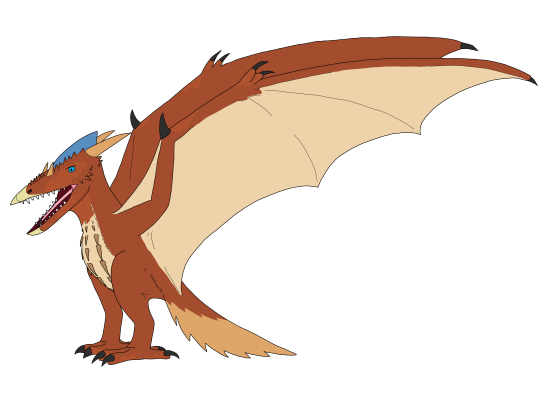
Biola: Monster Genesis: "Fire Rodan”
Before I get into lore, this is also showcasing a tweak to the design to line up with the woodpecker-like niche that will also apply to the other two Rodans. Zygodactyl feet for gripping onto the cliff and, as proposed by my friend @artmakerproductions, a more squat posture like a woodpecker that also matches the classic suit look when reared up, the tail also acting as a prop like woodpecker tails. Included are sketches he made to illustrate the look more:



Now onto lore…
The mated pair of Rodans weren’t the only individuals of this species present during those events. Indeed there was a third, another male. Contrary to the large, light blue male Rodan (named "sky Rodan" for his coloring and habit of foraging during the day for camouflage), this smaller individual was a sneaky male that resembles the female. The dominant male seems to have figured out that this is not a female, as he did not attempt to court the "Faeder Rodan" (a term used in ruff birds to describe female mimics), but surpisingly seemed to tolerate his presence regardless and even showed no qualms with him mating with the female. This is thought to be because the faeder Rodan acted as an extra parent for the clutch of eggs, with them having probably been a mix of the dominant male and the faeder male's eggs. Staying with the nest whenever the other two went out to feed before going out to feed himself when one of the pair returned and took his spot, the faeder Rodan was accepted by Sky Rodan as his contribution bolstered the survival of not just the "sneak's" offspring, but also of Sky Rodan's offspring—the three Rodans essentially formed a polyarmory.
Before the controlled eruption of Mt. Aso, faeder Rodan was off foraging at a nearby Meganulon hive, which just so happened to be the one Erika and Jet were in. As a matter of fact, after a Meganulon larvae had pierced Erika in the gut with its claw and was just about to kill her outright, the Rodan broke through the outside wall and impaled the Meganula with his tongue, devouring the grub and effectively saving Erika’s life. He peaked in further to see the other small creatures that were inside (though not seen as food when there were Meganulons present), but then its attention was drawn by a nearby explosion; Mt. Aso had erupted.
The faeder Rodan flew off to get to the site and even tried to rescue his mate, but his efforts were unsuccessful and he was soon forced to fly off to save himself from the same fate. All he ended up getting from the attempt were burns that eventually blended into his natural skin color as the tissue healed into scars (at least from a human’s perspective…). Then, some time later, the now-20-meter and part-Godzilla Erika, along with Jet, Martin to report on their findings, and eventually Miki “Sakura” Serizawa (another Typhon child and an old friend of Erika’s who she runs into again after quite some time), are scouting the wilds of Kentucky to look into UFO sightings that, instead of resembling typical alien spacecraft imagery, seemed to hint at there being a colony of Meganulon that needed to be dealt with before it could grow and become a nuisance/threat. But there, they also encountered another creature: a Rodan. And one that looked strangely familiar to Erika for some reason…
Later on, the gang was face to face with the queen of the Meganulon colony, an individual Martin had predicted the existence of through the eusocial behavior of the Meganulon and was thus designated with the name he thought of for this hypothetical creature: the Meganulon Ogress—Megaguirus for short. Then, the Rodan they encountered swooped in and attacked the Megaguirus, turning the tides for the group. With Megaguirus flying off and Erika not being able to reach it with her vines even when jumping on the Rodan’s back for extra height (he didn’t seem to mind), the dinosaur then took off to pursue the insect with Erika riding atop him. After a dogfight with Megaguirus and some Meganulon that had come to defend their queen (think the 2019 Rodan chase), the Rodan fought the Megaguirus in midair close combat as Erika (safely) fell to the ground. After being knocked down, Megaguirus slowly approached the fallen kaiju to finish it off. Realizing where she’s experienced a situation like this before and why this Rodan seemed so familiar to her, she impaled Megaguirus with a sharp vine; Erika had now returned the favor…
For this was the same Rodan who saved her all those weeks ago.
Now having a closer bond with this pachycephalosaur (not a replacement for the mate he lost, but more like a friend), Erika noticed the burn scars on him, made more visible to her with the rest of his body being more vibrantly colored in her tetrachromatic vision (maybe hinting at the next Biola post I make, hmmm????🤫). The marks left from his touch with volcanic flame and the firey colors she could see is what christened this individual his new codename. Not faeder Rodan… but Fire Rodan.
4 notes
·
View notes
Text
My reason for being absent for a while.
I am from a very small town in Southeast Kentucky. On July 28th our county and surrounding counties were hit by a devastating flood.
My county completely lost over 2500 homes. We are still struggling to get homes repaired, torn down and getting help from Fema. We, me and my boyfriend, and 5 of our neighbors have been volunteering every giving away everything from food, cleaning supplies, toothpaste and brushes every thing that is needed to just to survive at a Distribution center that started out under canopy tents on my property . We are now in a building beside my house.
I can't tell you in words exactly how this feels. My mother's house had 9 feet of water in the basement, which is a very large room, the water came up the stairs to the Den which is another large room, to the fireplace mantle which is over 5 feet high, then went another 4ft up a staircase to the kitchen..
Our bridge which was 70ft long made of steel washed completely away. The car was carried away along with everything outside.
After pumping the water out there was 2 feet of mud. All of the furniture, dad's tools and all mom's Christmas stuff, clothes , and a lifetime of our family history. All the furniture, pictures just completely everything is in the front and back yard, after 5 cleaning crews came. Mold was a huge problem. The garage which was big held which held lawnmowers freezers, wood working tools, garden equipment and so much more was washed out.
HOPEFULLY soon we can manage to piece together our lives and move forward.
To date we still don't have a bridge, furniture or water. But surviving.
#southeast kentucky#spiders#spider photography#insects#entomology#insect photography#photographers on tumblr#nature photography#macro photography#science
6 notes
·
View notes
Text
One mountain in Brazil is home to a surprising number of these parasitic wasps
Thought to thrive in milder climates, many species of Darwin wasps apparently love the tropics too
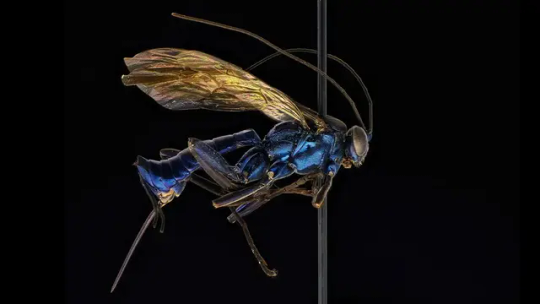
The tropics are teeming with life, tending to hold far more species than milder environments closer to the poles. But one group of insects, the Darwin wasps, were thought to buck that trend.
Researchers who compared wasp diversity in the United Kingdom and the United States with tropical areas in the 1970s and ’80s concluded that these wasps were most diverse at mid-latitudes — say, Kentucky or England. But others thought that people just weren’t looking hard enough in the tropics.
It’s easy to look for wasps in a British garden, says Peter Mayhew, but “it’s very hard to do long-term work” in a tropical rainforest. Mayhew, a biologist at the University of York in England, was up to the challenge.
Now, after years of sifting through wasps collected from a single mountain in the Brazilian Atlantic rainforest a decade ago, Mayhew and colleagues have identified nearly 100 Darwin wasp species. The result, published November 7 in the journal Insects, suggests that the tropics are home to far more types of the wasp than was previously recognized.
Continue reading.
2 notes
·
View notes
Note
explain the beetle
if you mean the specific beetle I have alluded to in previous asks: Solaris "Solo" Apogee LVII of the Fourth House is a prince of Skathariopolis, a holy city-state of psychically-endowed beetles contained entirely within a large terrarium in a rural Kentucky high school. their Eidolon, SOUL TOGETHER, is essentially a black hole that they can roll around like a ball, absorbing and expelling mass as they see fit. this is because I wanted to make a joke about Katamari Damacy.
if you mean beetles in general: they're a type of insect, typically on the (relatively) larger side, who generally have rounded bodies and wings that "fold up" into their shells. Well-known types of beetle include longhorn beetles, scarabs, fireflies, ladybugs, rhinoceros beetles, and stag beetles. beetles are incredibly widespread and diverse, with over 340,000 known species and new ones still being discovered.
20 notes
·
View notes